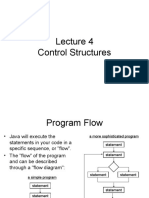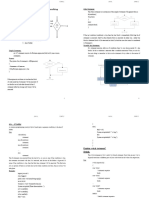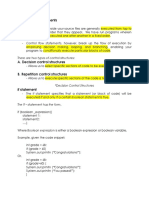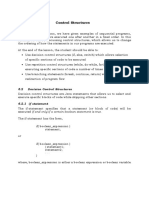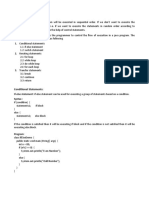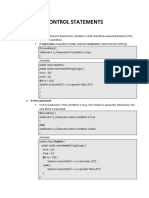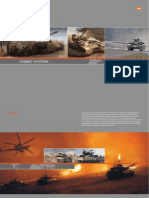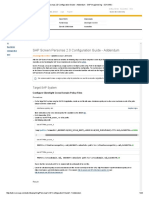0% found this document useful (0 votes)
73 views42 pagesControl Flow Statements
The document discusses different types of control flow statements in programming, including decision-making statements like if-else and switch statements, looping statements like while, do-while and for loops, and branching statements like break, continue and System.exit. It provides examples of using each statement type and explains their functionality.
Uploaded by
Jose Rey CIdCopyright
© © All Rights Reserved
We take content rights seriously. If you suspect this is your content, claim it here.
Available Formats
Download as PDF, TXT or read online on Scribd
0% found this document useful (0 votes)
73 views42 pagesControl Flow Statements
The document discusses different types of control flow statements in programming, including decision-making statements like if-else and switch statements, looping statements like while, do-while and for loops, and branching statements like break, continue and System.exit. It provides examples of using each statement type and explains their functionality.
Uploaded by
Jose Rey CIdCopyright
© © All Rights Reserved
We take content rights seriously. If you suspect this is your content, claim it here.
Available Formats
Download as PDF, TXT or read online on Scribd
/ 42

